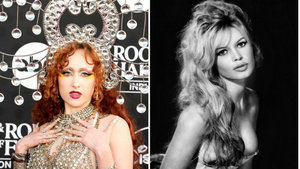There's probably a good reason why the Beach Boys put Aruba first in their 1988 song "Kokomo." From then on, folks from around the world arrived their fast so they could take it slow. But many visitors to this Caribbean desert island never make it beyond the beach resorts to the destinations that make Aruba an extra special place for discerning travelers.
Located only 15 miles from Venezuela, but in a whole other world, Aruba is part of the ABC islands (situated between Curacao and Bonaire). Colonized by the Dutch, today Aruba boats 95 different nationalities on the island and locals of color report that racism isn't as widespread as it is in other countries.
Most Aruban hotels are LGBTQ-friendly. Crimes against LGBTQs and same-sex couples are extremely rare, and the city of Oranjestad boasts plenty of queer-friendly nightlife. Within walking distance from the cruise ship port is the most popular "gay-powered" club @7 (7Aruba.com), a friendly mix of straight and queer tourists and locals.
We landed at the Aruba Marriott Resort & Stellaris Casino on Palm Beach, which just had a renovation that made their rooms the largest on the island, replete with giant balconies and 180-degree view of the turquoise Caribbean Sea.
A very family-friendly resort, Aruba Marriott fortunately has a lot of adult-only spaces, including a pretty romantic H2Oasis pool, the small but fun Stellaris Casino, and the exquisite Mandara Spa. Even better, if you have the cash, is the Tradewinds Club, a sort of resort within the resort, where you must be 18 to stay. Not to mention, you can have a personal concierge and packing assistance.
At Atardi, their pop-up restaurant on the beach, you can eat the catch of the day while sinking your toes in the sand (the restaurant opens just in time for sunset so you may interrupt dinner for some photography). The mixologists on location are hot shots. One sexy guy showed us how to make a drink with actual smoke and top tequila, a bartender's version of molecular gastronomy that absolutely wowed us.

Above: Couple lounges at the Marriott in their Insta-friendly chairs.
But what wowed even more was the rest of the island. Since Aruba is completely outside the hurricane belt, it gets less than 20 inches of rain each year, and stays around 82deg Fahrenheit year-round; it also offers interesting terrain to explore.
Arikok National Park takes up nearly 20 percent of Aruba and boasts a lot of animal and plant species, natural cliffs, a black sand beach, and hard-to-reach swimming holes. We jumped behind the wheel of a DePalms Tours UTV (depalmtours.com), a rugged all-terrain vehicle in which two people can sit side by side) and went on an off-road safari through Arikok, stopping at Ayo Rock Formations, Baby Natural Bridge, and the Natural Pool -- which was busy but still offered crystal waters, great spots to jump off the cliffs into water, and dozens of colorful fish viewed through my snorkel mask.
The urban art scene in nearby San Nicolas, a cool neighborhood where Aruba's Carnival began, is even more compelling (and easily the most Instagram-worthy area). Though a 30-minute bus or Uber ride from Oranjestad, folks who don't want to stray far from the ocean can do the art crawl, visit the key museums, grab a bite, and still make it to Baby Beach for some kite surfing or swimming.
The small walkable little 'hood has steel drum bands and art at every reach. A trio of museums (I loved the Community Museum) tells its stories. The streets have colorful seats with mosaic tiles wrapped around trees, and seemingly every building has a giant mural made by artists from around the world. Most of the murals feature people of color, or colorfully playful imagery, and frequent surprises. Set in the center of the city is a metal statue of a woman who would sell goods from the boardwalk; she was apparently kind of rude and mouthy but beloved and legendary so she was immortalized.
Cosecha (ArubaCosecha.com) serves as a design store selling local artisan creations, and a workshop where artists offer short classes to visitors. Everything sold comes from artists and makers who've been SEYO-certified (the national seal of craftsmanship in Aruba. You won't find "made in China" tags on your souvenirs). We took a workshop to paint a Divi tree on a piece of driftwood, which even the non-artsy guy with me enjoyed.
For lunch in San Nicolas (dubbed "Sunrise City"), try Charlie's Bar, a 70-year-old tradition which feels a bit like Aruba's version of an old school honky tonk. It's covered in memorabilia from floor to ceiling. Menus don't have prices, and while I ate peeled shrimp and scampi, an Afro-Caribbean singer did acoustic versions of Prince songs about two feet from my table. Not bad.

Above: Writer Calvin Hennick cuts loose on Baby Bridge, one of the natural formations on the island.
At the Marriott's La Vista, a pretty excellent buffet offers a mesh of local cuisines in one place and it was an excellent spot for trying different dishes and watching the delightful La Vista Carnival Show each Thursday, especially if you can't visit during carnival season. Several of the performers seem to defy gender binaries (at least on stage) and the cis women with their giant headpieces look like they could give RuPaul a run for the money. At one point, the performers pull in audience members to dance, and when both a gay man and a lesbian couple danced together, not an eyebrow was raised.
Aruba's food was influenced by indigenous folks (Amerindians), colonists from the Netherlands and Spain, as well as African slaves, and immigrants from Asia, South America, and Caribbean.
Perhaps the most memorable meal was at nearby Pinchos (pinchosaruba.com), a restaurant literally on the pier overlooking the crystal-clear waters. We could sit at our table and watch 2-feet-long orange-colored fish swim right next to us, making for the kind of interactive meal I love. The Conch fritters and Espetada de Mariscos didn't hurt.
Back at the Marriott, the beach cabanas hanging chairs beckoned. We ended up back under one of those palapas, lounging just above the surf, with some of the island's finest tequila and not a single cell phone in sight.







































































Charlie Kirk DID say stoning gay people was the 'perfect law' — and these other heinous quotes